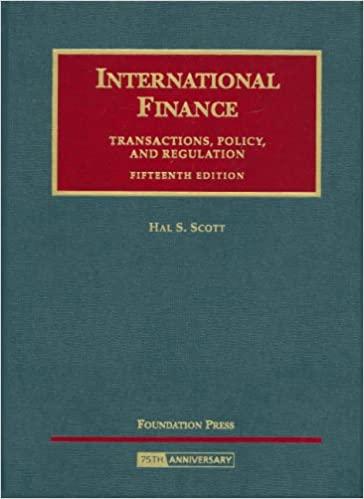Answered step by step
Verified Expert Solution
Question
1 Approved Answer
A typical PEC meeting involves the review of 1 0 to 1 5 CPRs . All the proposals were considered economically attractive, as any CPRs
A typical PEC meeting involves the review of to CPRs All the proposals were considered economically attractive, as any CPRs with questionable economics were usually rejected at the lower levels of review. In the rare instance when a project with a negative NPV reached the PEC, the committee may consider the project in light of its strategic importance to the company.
PEC meetings last several hours as each project receives scrutiny from the members. The process was designed to be rigorous because the PEC recognized that capital investment could significantly impact the company's shortterm and longterm profitability. In addition to the large amount of capital at stake, approvals and denials also had the potential to set precedents that would affect future decisions. For example, the committee might reject a proposal with a positive NPV if the investment amount requested was much higher than usual and, therefore, might create a troublesome precedent for all subsequent requests. Despite how much the projects differed, the committee was usually able to reach a consensus decision for the vast majority of them. Occasionally, however, a project led to such a high degree of disagreement within the committee that the CEO made the final decision.
Projects typically require to months of development before being forwarded to the PEC for consideration. The committee considers several factors to accept or reject a project. An overarching objective was to meet the corporate goal of adding new investments per year while maintaining a positive image. Projects also needed to fulfill various financial objectives, starting with providing a suitable financial return measured by discounted cash flow metrics. Other financial considerations included profit, earnings per share impacts, total investment size, impact on sales of other nearby locations, and sensitivity of NPV and IRR to sales variations. Projected sales were determined based on economic trends and demographic shifts but also considered the risks of entering new competitors and competition. Lastly, the committee attempts to keep the project approvals within the capital budget for the year. If projects were approved more than the budget, MM would likely need to borrow money to fund the shortfall. Adding debt unexpectedly to the balance sheet could raise questions from equity analysts as to the increased risk to the shareholders and the ability of management to project the companys funding needs accurately.
Other considerations include tax and realestate incentives from local communities and area demographics. MM typically purchases properties where it built stores, although leasing was occasionally considered. Population growth and affluent communities were attractive for the retail side of its business. However, these factors also invited competition. Occasionally, MM would strategically build a new store to block other retailers despite marginal shortterm returns.
When deciding whether to open a new store, the PEC was often asked to consider alternative store formats. The desirability of one design over another is usually centered on functionality and augmentation possibilities. PEC members are provided with a capital request dashboard for each project that summarizes the critical inputs and assumptions used for the NPV and IRR calculations. For example, the MM table provides an example of a dashboard with its contents. These include incremental sales estimates computed as the total sales expected for the new MM less the sales cannibalized from existing products. Sales estimates were made by the Research and Planning R&P group. The R&P group uses demographic and other data to make specific forecasts. Incremental sales were computed as total sales less those cannibaliMM CQ: Which of the five CPRs should Dylan accept? Explain how each of the considerations influenced your decisions:
A NPV and IRR
B Size of the project
C Cannibalization
D Product sensitivity
E Variance to prototype
F Customer Demographics
G Brand awareness impact.
Q: Does your opinion change to the accepts in the above question if the investment amount shrinks to $ million?
Q: Why does MM use different hurdle rates for the value created and processing activity? How might you estimate these discount rates to see if they are reasonable?
Q: As a member of the PEC, would you continue to approve CPRs if it meant that MM would need to fund the requests with external funds, either debt andor equity?

Step by Step Solution
There are 3 Steps involved in it
Step: 1

Get Instant Access to Expert-Tailored Solutions
See step-by-step solutions with expert insights and AI powered tools for academic success
Step: 2

Step: 3

Ace Your Homework with AI
Get the answers you need in no time with our AI-driven, step-by-step assistance
Get Started


